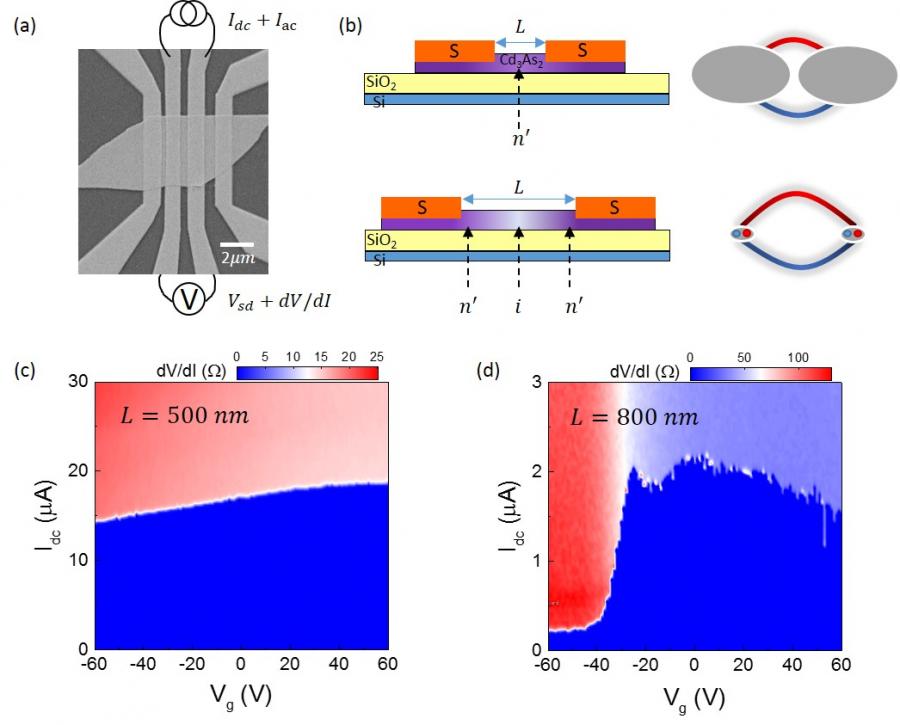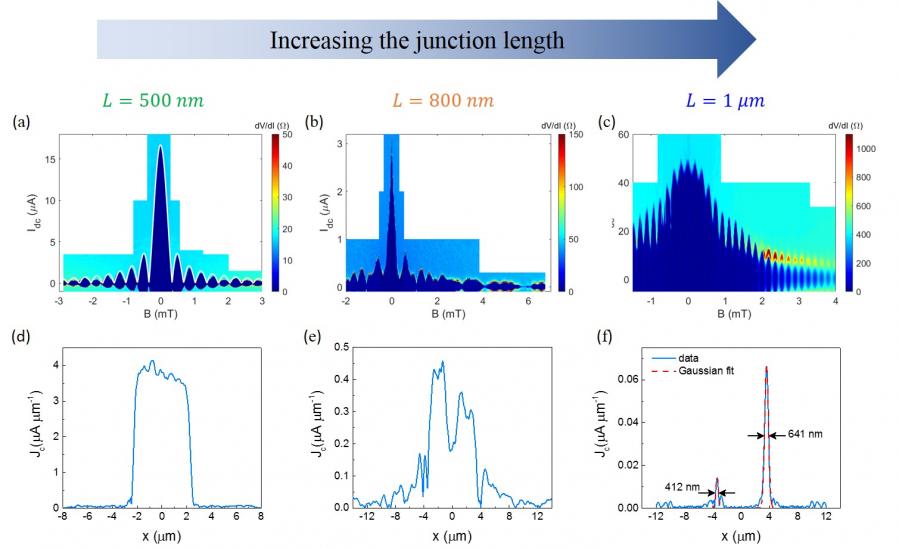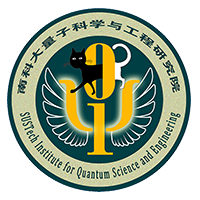Research progress of Higher order topological hinge states in Dirac semimetal
Recently, Academician Dapeng Yu, Dean of the Shenzhen Institute of Quantum Science and Engineering (SIQSE) at Southern University of Science and Technology, and postdoctoral researcher Caizhen Li, cooperated with Professor Zhimin Liao from Peking University, Assistant Professor Chuan Li and Professor Alexander Brinkman from University of Twente, the Nertherlands, have made new progress on the topological hinge states in Dirac semimetal Josephson junctions. The relevant results was published in the journal Physical Review Letters under the title "Reducing Electronic Transport Dimension to Topological Hinge States by Increasing Geometry Size of Dirac Semimetal Josephson Junctions".

With the development of topological materials such as topological insulators (TIs) and topological semimetals, finding and understanding new topological states have aroused extensive attention. Topological states have rich physics and present high attractive application prospects. In recent years, with the development of topological classification technology and the study of topological state, the concepts of higher order TI, higher order topological semimetal have been developed. The higher order is reflected in the bulk-boundary correspondence. For a traditional d-dimensional TI, it has (d-1)-dimensional gapless topological states. For example, a three-dimensional TI has a two-dimensional Dirac surface states, and two-dimensional TI has one-dimensional helical edge states. While a d-dimensional n-th order topological phase holds gapless states with (d-n) dimension, with 1≤n≤d. For instance, a second-order TI in two dimensions has gapless corner states. Similarly, a second-order TI in three dimensions has 1D gapless hinge states. After the concept of higher order TIs, the concept of higher order topological state was also extended to topological semimetals, resulting in higher order topological semimetals. The appearance of higher order topological states attracted extensive attention in the field of condensed matter physics, and has made rapid progress in theory and experiments. However, the study of higher order topological states, especially higher order topological semimetals, is still in its infancy.
As a paradigm, Cd3As2 is predicted to be a higher order topological semimetal, possessing 3D bulk Dirac fermions, 2D topological surface states and 1D hinge states. However, it is difficult to identify them through transport experiments due to the mixed conduction channels.

Fig.1. The supercurrent distribution in Josephson junctions and corresponding supercurrent interference pattern in a perpendicular magnetic field
Here we report the transport modes filter effect in Dirac semimetal Cd3As2 nanoplates by constructing Josephson junctions. The supercurrent interference in a magnetic field provides a way to identify the supercurrent density distribution in the junction. When the supercurrent flows uniformly through the junction, it results in a standard Fraunhofer pattern. While in the case of edge carried supercurrent, the junction acts as a superconducting quantum interference device (SQUID) pattern.
Then how to extract the 1D hinge states from the mixed conduction channels experimentally? The researchers recognized the different superconducting coherence lengths of different conduction channels, which allows one to distinguish their properties by increasing the channel length of the junction.

Fig. 2. The realization of supercurrent carried by 3D bulk to 2D surface states by increasing the junction length
First the researchers studied the gate dependence of critical supercurrent in two Josephson junctions with different junction length. For the short junction, the channel between the two superconducting electrodes is highly electron doped by Nb deposition, thus the bulk states are dominated and the surface states are indistinguishable from the bulk, resulting in a monotonously increase of critical supercurrent as gate voltage is tuned from negative to positive. While in a long junction, the electron doping effect is relatively reduced, giving rising to a surface dominated transport. In this case, the critical supercurrent develops a peak near the Dirac point. Therefore, the dimensional reduction from 3D to 2D is realized.

Fig.3. With the increase of junction length, the supercurrent interferences changes from a Fraunhofer pattern to a SQUID-like pattern.
To further study the 1D higher order hinge states, the researchers measured the supercurrent interferences of the Josephson junctions with different junction length under a magnetic field. An evolution of supercurrent quantum interferences from a standard Fraunhofer pattern to a SQUID-like one is observed when the junction channel length is increased. The SQUID-like interference pattern indicates the supercurrent flowing through the 1D hinges.
The identification of 1D hinge states should be valuable for deeper understanding of the higher order topological phase in a 3D Dirac semimetal.
Caizhen Li and Anqi Wang (a postgraduate from Peking University) are co-first authors of the paper. Professor Zhimin Liao and Assistant Professor Chuan Li are corresponding authors. This work was supported by National Key Research and Development Program of China and NSFC.
Paper link: https://journals.aps.org/prl/abstract/10.1103/PhysRevLett.124.156601



